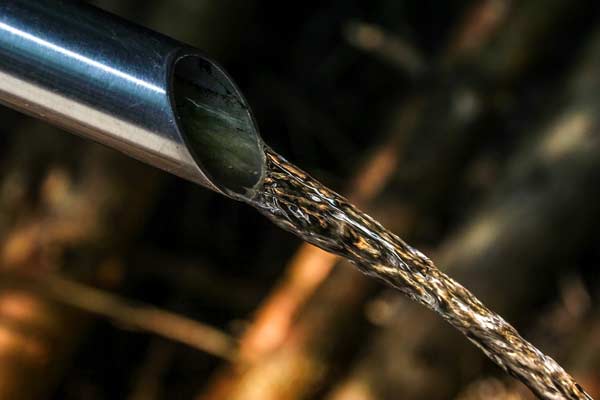At What Temperature Do Pipes Freeze Canada?
Water usually flows from the tap, through your pipes, and into your home or business.
However, if pipes do not work as they should, water can freeze in your pipes. When pipes freeze for any reason, there is a risk of severe accidents and flooding, which could cause significant property damage and injuries.
Additionally, certain types of wastewater from hospitals and nursing homes risk spreading deadly pathogens that could lead to serious health problems or even death.
Therefore, it is imperative to ensure that pipes do not freeze when the temperature drops.
What Causes Pipes to Freeze?
There are several causes of pipe freezing. The following are six causes of pipe freezing. They include:
Extreme weather conditions
very cold winters can cause pipes to freeze at the most inconvenient times. Cold snaps usually occur when the temperature drops sharply, with a fall of 20 degrees Fahrenheit in 24 hours is considered a warning sign.
In addition to extreme winter weather, you should also consider the insufficiency of heating when analyzing risks posed by pipe freezing. It is quite common for older homes to use poorly insulated heating systems, causing pipes to freeze.
Low pipe temperature
If pipes are not properly insulated, freeze-damaged pipes can lead to pipe freezing. It is a common misconception that pipes can freeze and then thaw. It is true only in very rare cases.
Failure to carry out maintenance/repair
Neglecting to carry out maintenance on pipes, such as replacing water supply valves, can also contribute to freezing. It can also be caused by ignoring damaged or frozen sections in your piping.
If the pipeline is damaged or frozen, water will not flow freely and may be unable to reach the heating system or other parts of the building where it is needed.
Exposure to water
If pipes are exposed to a large amount of water and then freeze, as can happen during heavy rains, this can cause serious flooding and water leaks.
Improper pipe insulation
Insulating your pipes to prevent freezing is important, and you should always keep an eye out for signs that a pipe may be frozen. If an area has been frozen for a long time, it can also have deep cracks and fissures that allow ice to flow more easily.
Ways to Reduce Pipe Freezing Risks
Even though pipe freezing is a significant issue, there are things you can do to minimize the risk and help prevent frozen pipes from being a costly disaster.
Seal any gaps and cracks in your piping
Leaks in your pipes can allow pipe water to freeze, leading to potential pipe freezing. The water that flows through your system does not have to work as hard as it does to penetrate through gaps and cracks. Therefore, it is imperative to check for any possible leaks before pipes freeze and fix any that you discover.
Regularly check for pipes that are exposed to water
You should check any exposed water pipes in your home or business regularly to ensure that they are properly insulated from the cold. Even though you must prevent leaks and fix them, you can reduce the risk of pipe-freezing by ensuring that there is little or no water left in your pipes when freezing outside.
Insulate your pipes
Insulating piping can help prevent the freezing of water within it. Insulation will also help reduce the freezing of water already inside your pipes. Try to insulate pipes exposed to water in the basement, crawl space, or crawl space tank area.
Install an electrical moisture sensor
These sensors are useful in detecting moisture and overheating and can be installed in two main areas: the crawl space and the hot water tank. They are very effective at preventing freezer pipe damage.
Install an electrical thermostat
These sensors can be set to lower the flow of water to pipes exposed to heat to prevent freezing. For example, if pipes are exposed to a heater, they can have their flow reduced.
At What Temperature Do Pipes Freeze in Canada
Most outdoor pipes freeze at around -20 degrees Celsius in Canada, and indoor piping can freeze at much higher temperatures.
For example, hot water pipes can freeze at about 0 degrees Celsius if the heat is not on. Even pipes exposed to heat can freeze when water does not flow through them properly.
Your pipes are exposed to the environment when it is freezing. As a result, you should insulate any exposed piping. Insulating pipes can help prevent frozen pipes from forming.
Why Do Pipes Freeze in Cold Weather?
The water freezing in a pipe is called “freezing” or “frost.” Most pipes are made of several layers: the outer layer is called a pipe jacket, which protects the inner layers of the pipe. The cold air temperature can penetrate through these jackets and freeze water in pipes.
The freezing point of water decreases with increased atmospheric pressure; therefore, when there is a fall in atmospheric pressure, its freezing point will reduce. When the temperature is below freezing, there is reduced atmospheric pressure, and therefore the water in the pipes can freeze. In cold weather, pipes may freeze after a few days if they are left uncovered.
It is important to turn off all unnecessary appliances in cold weather to save energy. By turning off unused appliances such as central heating appliances, the flow of hot water through your building will be reduced, resulting in pipes having no hot water even though you have turned on your taps.
Conclusion
The key to preventing frozen pipes is understanding how they work and what can cause them to freeze.
For example, if you know that your home or building is colder on the outside than it is on the inside, you can take steps to reduce the risk of freezing by insulating your piping.
If you need more information on preventing your pipes from freezing, don’t hesitate to get in touch with a local plumber so that they can give you a way forward.







